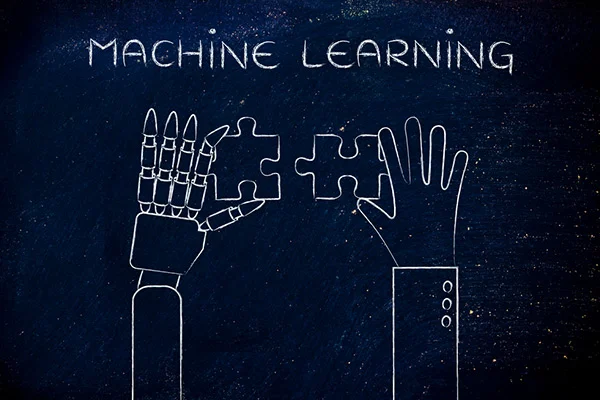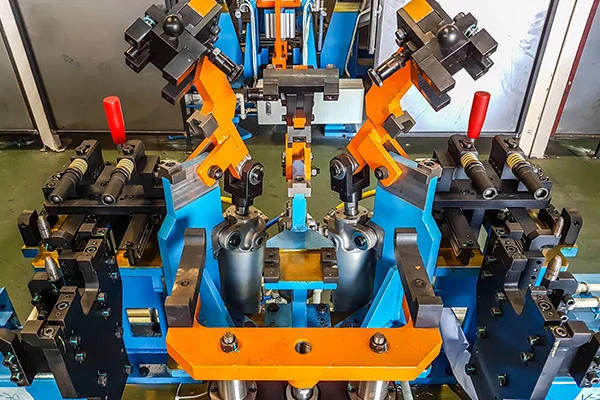Smart Machines & Solutions for Smarter Performance
By Swanand Jawadekar Today, smart machines have become one of the integral parts of smart factories leading to the Industry 4.0 revolution. This paper details solutions developed for special purpose machines such as cartooning machines, tube filling machines and can be extended to similar types of SPM’s. These machines perform specialized manufacturing operations and are integral parts of agriculture, pharmaceutical or industrial factories. The Solution capitalizes on the readily generated engineering data in conjunction with loT (Internet of things) and AR (Augmented Reality) to make the machine smarter in a connected environment. It uses operating data from the equipment to predict various functional parameters such as production and performance analysis, energy analytics, delivering new insights towards Overall Equipment Effectiveness (OEE). Design and Development: Critical Foundation Today, the Digital twin has become an integral part of the manufacturing process. It can be characterized as a digital representation of the physical asset, which enables additional insight into machines’ performance. Besides supporting design strength analysis, it provides tools to examine the operating mechanism, loads and boundary condition, failure studies, alternate material. Carrying out a mechanism’s kinematic analysis involves calculating the velocity, location, and acceleration of any of its points or links for the prescribed time step. The study helps the user understand the mechanism’s behavior and make changes in geometry, material, and improve product performance. For any machine performance evaluation, mechanisms play a critical role. From material entry to final product manufacture, there are various mechanisms involved, consisting of combinations of conveyers, Cam, and rollers. Apart from analyzing critical mechanism parameters, Digital twin can be effectively used to identify influential data parameters affecting machine performance which can be further monitored using loT Techniques. The parameter identification will help the user effectively use sensors, location, and data acquisition and connect to the mobile portal. Once the critical parameter has been identified and equipped with sensors, they can measure the real-time mechanical or heat load which the machine experience in real life. Based upon received data, one can predict component failure, and the same can be replaced much before the break or worn out. Data Anytime / Anywhere Currently, most customers are looking towards intuitive products, easy to interact with, and high on performance parameters. Smart machines effectively use loT tools and parameters identified from Design simulations to provide a robust tracking mechanism. As determined by validation studies, critical machine design parameters can be further monitored to achieve better insight into machine performance. The performance tracker data can be accessed from a remote location and enhances the support system’s reach. IoT also helps the customer for a better post-sale experience and optimized environment. Following are some of the typical machine performance parameters which can be tracked live: Augmented Reality Augmented reality is gaining momentum in the marketplace and has shown incredible potential to support enterprise activities with different departments to perform their operations efficiently. It promotes a converged experience for the 3D AR content to Visualize, Instruct, simulate the working environment. The approach embeds desired parameters from the loT platform in the AR experience helps visualize a machine’s real-time information. AR studies can further be synched with various levels of an organization as illustrated below: In the Nutshell Design engineering has evolved dramatically. From draft board design to Computer-Aided Design and modeling to virtual reality, it has crossed global boundaries. With old proven CAD techniques and new Data, AR/VR (augmented and virtual reality) tools, we support international customers to build their design faster, better, and accessible / monitor from remote locations. These solutions extend flexibility to the customer and bring the global design team to work together towards standard global.
Read MoreFuture of Product Design in the Era of Smart Connect!
By Swanand Javadekar Preface The automotive industry has been facing a daunted set of challenges with upcoming connected cars, autonomous driving, and electric vehicles. It is an opportunity to differentiate for the right minds by bringing the right mix of solutions to the customer and enlightening them with more intelligent products. The following paper highlights the association of technology trends to design connected products and build efficient ecosystems for execution. Some of the aspects discussed are Trends There are various ways technology is changing product outlook, following are some of the exciting trends influencing product design and development cycle: Smart Products: 4 promoting factors Today, Smart Products have become one of the integral parts of our life. It changes the way we use products and generates new business models. This paper details layout developed to build intelligent products and discusses the contribution and trends in each sector. The discussion is limited to product design and development and not extended to manufacturing 4.0. In a connected environment, smart products use the basic engineering data in conjunction with loT (Internet of things) / AR (Augmented Reality), embedded systems, and data analytics to provide better insight to the user and a machine manufacturer. It uses operating data from the equipment and uses a feedback loop effectively to predict various functional parameters related to product performance. Designing smart products As a designer who builds innovative products, he uses various advanced tools such as MBD (model- based engineering) and DEM (differential element method) to generate better insight into component behavior. Digital twin, which generates buzz across the engineering community, is a virtual replica of a product containing representative mechanical, electrical, electronic, and performance configuration information. The digital twin is not new, as the design community is already using various CAD, CAE, and CAM tools for the past few years. However, it has witnessed changes in the ability to collect, collate and analyze big data, work towards finding trends, anomalies and use the feedback loop back to design context to make it robust. Building digital twin also leads to effectively monitoring data, leading to building newer business models. Simulation is also one of the data-driven tools extensively used to analyze components, from simple durability to complex crash simulation. With higher computing power, the data handling capacity has been increased, as it can handle complete vehicle analysis compared to component level validation. Today, ROM (reduced-order method) based models have been used, which are machine learning solutions for reducing the size of a data set while preserving the essential parts of the information contained within that data. Such an approach now supports the user to analyze the components for rapid execution, reducing the total number of runs. There are various methods for which data analysis techniques are used: fault detection, predictive maintenance, statistical monitoring, real-time crash, and safety. Designing connected products: AR/VR Today AR/VR is playing a significant role in automotive product design and development. Typically, AR/VR can be extensively used for design and development, manufacturing, marketing, training, and servicing. More usage of these techniques is applied towards manufacturing and marketing, but the practice of product design is on the rise. Someone can effectively use these techniques used for design reviews and revision comparison. With the latest external devices such as hololens available in the market, the user can get an immersed view of the design for detailed assessment. Designing Embedded products: ADAS It’s exciting to note how these four verticals complement each other for product feature enhancement. Let’s take the example of embedded system / ADAS (advanced driver-assisted systems). We have seen that, typically, engineering simulation has been used for product development and digital twins, but the usage can be extended towards ADAS development. Some of the scenarios where validation tools can support to improve product performance understanding are semiconductor simulation (reliability analysis of Printed circuit board, energy consumption), sensor simulation (radar pattern simulation, placement of sensors compared to signal integrity), and driving scenario (software algorithm modeling simulation) Designing insightful products We know that Data analytics tools are effectively used for supply chain optimization, marketing mix analysis, user and dealer satisfaction, and customer behavior analysis. How can it be effectively used for a designer to view insight at an early stage? Today product designers are facing challenges towards converting data to actionable insights. The designer will work on three types of data, design data (based upon engineering calculations), test or proving data (standard vehicle test data), and real-life running data (received via various sensors loaded at designer vehicle test points). Multiple data analysis tools/algorithms will support to decode the data effectively and will support designer to take early decisions such as component failure prediction, feature management (leads to customization of platforms). Getting Act Together As mentioned in the above column, various technologies work seamlessly to build a better and more innovative product. Let’s discuss a few examples of how companies use a combination of technologies to build a newer customer experience. Design proposal selection Today Tier1 suppliers are interacting with OEM to select their various design proposals. With AR/hololens, the supplier can offer a better immersive experience to the customer. It also helps end customers select design proposals much swiftly, saving time and money. For example, automotive interior tier 1 suppliers can envision and demonstrate “Instrument panel” fitments within the car environment to OEM’s. With changes in color scheme, shading, feature recognition, the end customer can envisage effectively for better selection. Light-weighting In summary Automotive product design has expanded beyond CAD, and advanced tools have been implemented in the early stage of the design cycle. It assures various benefits to designers such as better understanding of product behavior, customer-centric innovative design, and shortens design cycle, saving time and money.
Read MoreWhat are Jigs and Fixtures, their Advantages, and Differences
Table of content Jigs Fixtures Differences between Jig and Fixture With the rapid advancement in manufacturing technology, consumerism has increased. Therefore, to meet the higher demands, manufacturers have developed innovative methods to produce high- quality products faster. The production process has observed the introduction of inventive manufacturing concepts such as Lean Production System, Cellular Manufacturing, Single Minute Exchange of Dies, and Tact Time Analysis. These creative approaches require a horde of efficient, cheaper tools and work-holding devices. The manufacturing company requires a simple work positioning strategy and devices for correct operations. This is to ensure: The industry has resorted to easing up the supply chain to maintain. This resulted in better and cost- effective work-holding devices that ensure better quality products, increase throughput, and reduce lead time. The requirement for the production of standard work-holding devices has paved the way for two specific terms named: Jigs and Fixtures. The jig is the device that guides the tool, while the fixture is a tool that securely and firmly holds the job in position during machining operations. Jigs In simple terms, a jig is a tool that guides the machining tool. A common type of jig is the drill jig, which guides the drill for making holes at desired locations. Using drill jigs increases the production rate drastically. These tools are usually made of metal, such as steel and aluminum, and are generally fitted with positioning devices called bushings. These tools guide the operation of machines and other equipment. Fixtures On the other hand, a fixture is a tool that firmly grips a workpiece on the machine bed accurately at the desired location. The fixture also reduces the loading, unloading, and fixing the time of the workpiece, which significantly reduces the non-productive hours. Fixtures are used for milling, turning, and grinding operations. To ensure proper alignment and hold of parts, fixtures can include a variety of locating components. Some manufacturers are even turning to 3D printing for their fixtures. Typical jigs and fixtures are made from Cast Iron or Aluminum, though steel versions are also available. These jigs and fixtures can be purchased or custom-built. They are mounted on T-Slot plates and hold a variety of work holding devices. Differences between Jig and Fixture “Jig” and “Fixture” are often referred to as synonyms, while sometimes both are used together as jigs-fixtures. Although both jig and fixture are used in the mass production process, functionally, the two are quite different tools. Let us go through the main points which differ a Jig from a fixture. Jigs Fixtures A jig controls and guides the machining tool A fixture holds and supports the component precisely for machining operations Jig ensures accuracy, repeatability, and interchangeability The fixture provides a reduction in error by holding a component firmly on a table Jigs are usually on the lighter side The fixture is bulky, rigid, and heavy Jigs can be put in place and held by hand pressure Fixtures are always placed firmly on a machine table Some of the standard jig functions are drilling, reaming, tapping, and boring Fixtures are used explicitly in milling machines, slotting machines, and shapers Jigs cost more Fixtures are not that cost-savvy compared to Jigs Jigs require intricate design operations Fixture design operations are relatively less complicated Advantages of Jigs and Fixtures Jigs and Fixtures have made manufacturing processes less time-consuming, more precise, and hassle-free from a human factor perspective. The benefits of jigs and fixtures include but are not limited to the following: Both jigs and the fixtures are used to ease machining operations and reduce the non-productive time of any mass production process. The principle of location or the 3-2-1 principle, CAD tools, and FEA tools are used to design jigs and fixtures. The following article will go through more detailed information about the 3-2-1 principle and design standards of jigs and fixtures. In the manufacturing industry, innovation is often about maximizing existing resources and building on the strengths of individual companies. Focus on jigs and fixtures helps companies increase productivity and production speed and cut overall expenses. They reduce the time required for quality control, cut down on errors, and speed up the production process. Furthermore, they are easier to use, even by semi-skilled operators. And since they are standardized, they ensure that every part produced is consistent, reducing the risk of human error.
Read More

